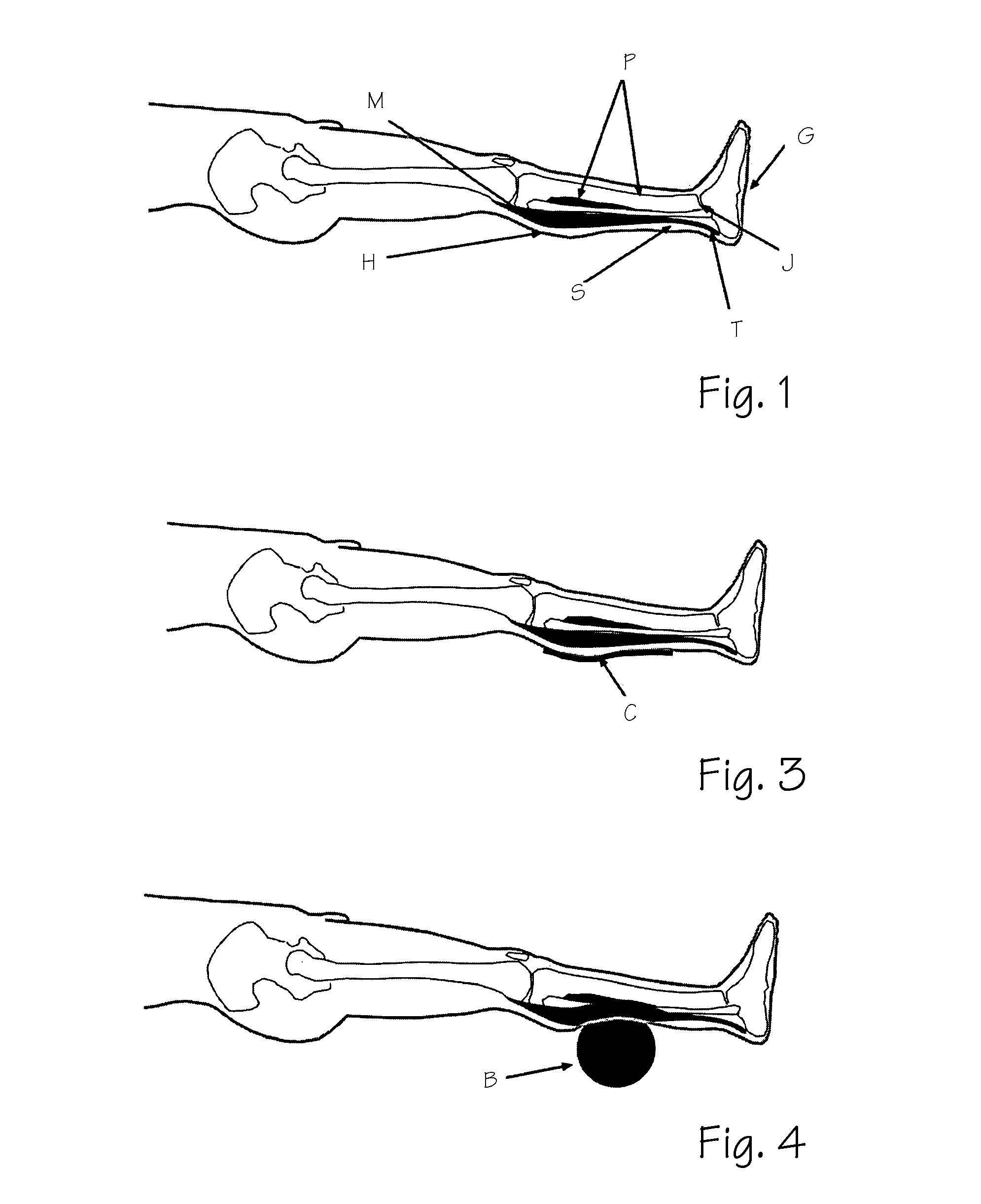Devices and methods for treating restless leg syndrome
a technology for restless legs and legs, applied in the field of restless leg syndrome devices and methods, can solve the problems of poor sleep, two published studies of patients selected from the general population accurately measuring the association, and severe affecting emotional well-being in the elderly, and achieve the effect of relieving rls symptoms
- Summary
- Abstract
- Description
- Claims
- Application Information
AI Technical Summary
Problems solved by technology
Method used
Image
Examples
exemplary embodiment 300
[0184]According to yet further principles of the invention, counter-stimulation for treatment of RLS can be produced by electrical nerve stimulation, muscle stimulation, or both. With reference to FIGS. 33 and 34, an exemplary embodiment 300 includes a series of sensors and / or electrodes 302 which are activated for muscle stimulation, nerve stimulation, or both. When activated for muscle stimulation, the voltage and frequency of the electrical energy applied to the patient is sufficient to cause muscular contraction, which provides the counter-stimulation to RLS; when activated for nerve stimulation, the electrical energy applied to the patient is sufficient to cause a patient's nerve to be stimulated. For either or both of these purposes, the electrodes and / or sensors are driven by a controller 304, which controls the application of voltage or current to the electrodes 302, and which may be a simple timer, a complex controller, or other such device. With reference to the exemplary ...
exemplary embodiment 330
[0186]According to further principles of the invention, counter-stimulation for treatment of RLS can be produced by application of a chemical to the patient's skin. With reference to FIG. 41, an exemplary embodiment 330 includes localized ports 332 or a porous membrane 334 positioned on the patient's skin, to dispense a preselected chemical, thus causing sensory stimulation. With reference to FIGS. 42 and 43, one or more chemicals can be input to a bladder 336 or diffuser, and provided in either a pulsatile or continuous flow. A bladder / diffuser, when used, can dispense a chemical such as Bengay™, capsaicin, or DMSO, which provides an exotherm on dissolving into the skin. As indicated in these figures, the chemical application can be completely circumferential, or locally, non-circumferentially applied, where the bladder acts as a manifold for the chemical.
exemplary embodiment 340
[0187]According to further principles of the invention, counter-stimulation for treatment of RLS can be produced by application of magnetic fields to a portion of the patient. With reference to an exemplary embodiment 340 illustrated in FIGS. 44 and 45, one or more electromagnets 342 are positioned close enough to the patient for the magnetic field to produce a counter-stimulation. A controller, not illustrated, is provided to control the operation of the electromagnets, that is, to turn them on and off, alternate the current direction, rotating fixed pole magnets within a housing, or combinations thereof. Electromagnets, rotating fixed pole magnets, or either of these could be sequenced to give some vibration or touch sensation, if desired. As illustrated in the cross-sectional views of FIGS. 46 and 47, electromagnets 342 can be positioned either circumferentially around a portion of the patient's body, or only on one side. In general terms, however, magnets can be provided which a...
PUM
 Login to View More
Login to View More Abstract
Description
Claims
Application Information
 Login to View More
Login to View More - R&D Engineer
- R&D Manager
- IP Professional
- Industry Leading Data Capabilities
- Powerful AI technology
- Patent DNA Extraction
Browse by: Latest US Patents, China's latest patents, Technical Efficacy Thesaurus, Application Domain, Technology Topic, Popular Technical Reports.
© 2024 PatSnap. All rights reserved.Legal|Privacy policy|Modern Slavery Act Transparency Statement|Sitemap|About US| Contact US: help@patsnap.com










